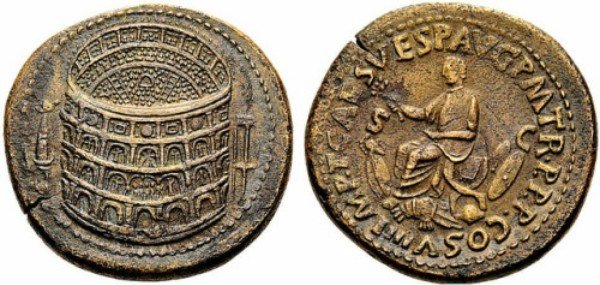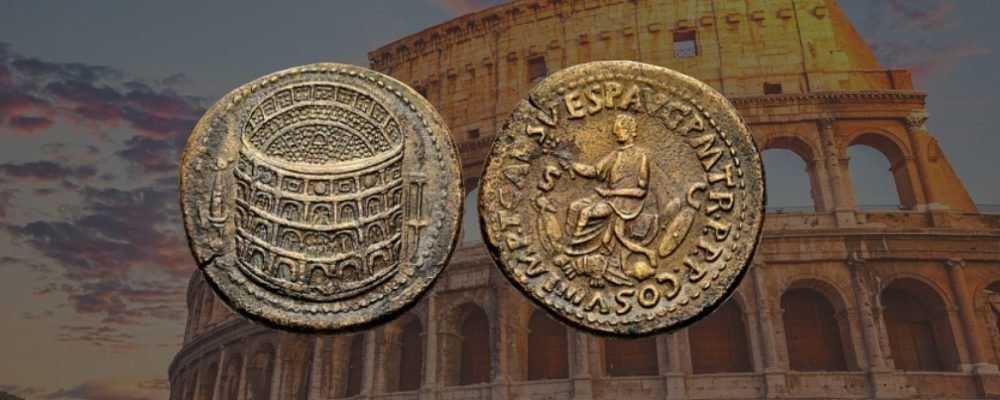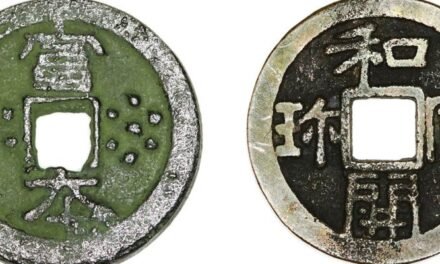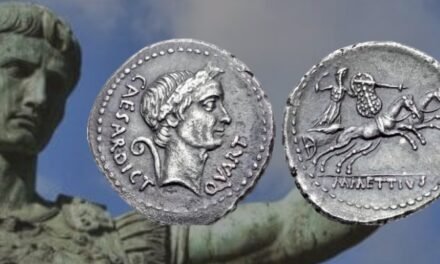Welcome, history enthusiasts and numismatics collectors!
Dive into the rich tapestry of Roman history with the Titus Colosseum Sestertius, a coin that not only commemorates one of Rome’s most iconic architectural wonders but also serves as a testament to the legacy of Emperor Titus.
This piece of currency captures a significant period in Roman history, embodying the grandeur and ambition of its people. Join me, Victor Gordon, as we explore the historical significance, design intricacies, and the lasting impact of the Titus Colosseum Sestertius. Keep reading!
Overview
The Titus Colosseum Sestertius is a bronze coin from ancient Rome, minted during the short reign of Emperor Titus (AD 79-81).
This coin is particularly famous for its depiction of the Flavian Amphitheater, commonly known as the Colosseum, which was completed during Titus’s rule. The coin not only served as currency, but also as a piece of imperial propaganda, celebrating Roman engineering and the Flavian dynasty’s contributions to Roman society.
Titus Colosseum Sestertius history
Titus, the elder son of Emperor Vespasian, ruled Rome at the height of its imperial power. His reign, though brief, was marked by significant achievements, including the completion and grand opening of the Colosseum in AD 80.
This grand amphitheater was built to host public spectacles, such as gladiatorial combats and mock sea battles, which were immensely popular among the Roman populace. The minting of the Colosseum Sestertius was likely aimed at commemorating this monumental achievement and reinforcing the image of the Flavian dynasty as bringers of peace and prosperity.
Coin design
The Titus Colosseum Sestertius features a detailed depiction of the Colosseum, showcasing its tiered levels of arches and the bustling activity of Rome’s center.
- The obverse of the coin typically bears the head of Emperor Titus, signifying his authority and divine status as ruler.
- The intricate details of the Colosseum on the reverse not only highlight the architectural prowess of the Romans but also serve as a visual reminder of the emperor’s generosity and the empire’s greatness.

Current worth and value
Today, the Titus Colosseum Sestertius is exceedingly rare and highly sought after by collectors of ancient Roman coins. Its value can vary widely based on its condition and the specifics of its provenance but generally reaches into the tens of thousands of dollars.
The price of this coin varies according to various factors, such as material, design, condition, etc. We can find bronze coins from $59 to rare silver coins of $500.000.
According to eBay.
The coin is particularly prized for its historical significance and as a piece of art that represents one of the pinnacle achievements of Roman culture.
Curiosities and fun facts
- The Colosseum could hold between 50,000 and 80,000 spectators, a testament to its engineering and the importance of public entertainment in Roman culture.
- The Sestertius was introduced as part of Augustus’s currency reform and was a key coin in the Roman economy, often used for large transactions and public expenditures.
- Titus was also known for his relief efforts following the eruption of Mount Vesuvius in AD 79 and a fire in Rome in AD 80, both of which endeared him to the Roman people and were likely celebrated through the minting of commemorative coins like the Colosseum Sestertius.
Conclusion
The Titus Colosseum Sestertius encapsulates a moment in Roman history where architectural and cultural achievements were celebrated through the medium of coinage.
It serves not only as a valuable collector’s item but also as a rich historical document that offers insight into the priorities and pride of the Roman Empire under the rule of Emperor Titus. This coin remains a cherished artifact for those interested in the monumental history of Rome and the enduring legacy of its leaders.
Thank you for joining me in exploring the significance of this exceptional coin, a tangible link to the past that continues to fascinate and inspire collectors and historians alike.






